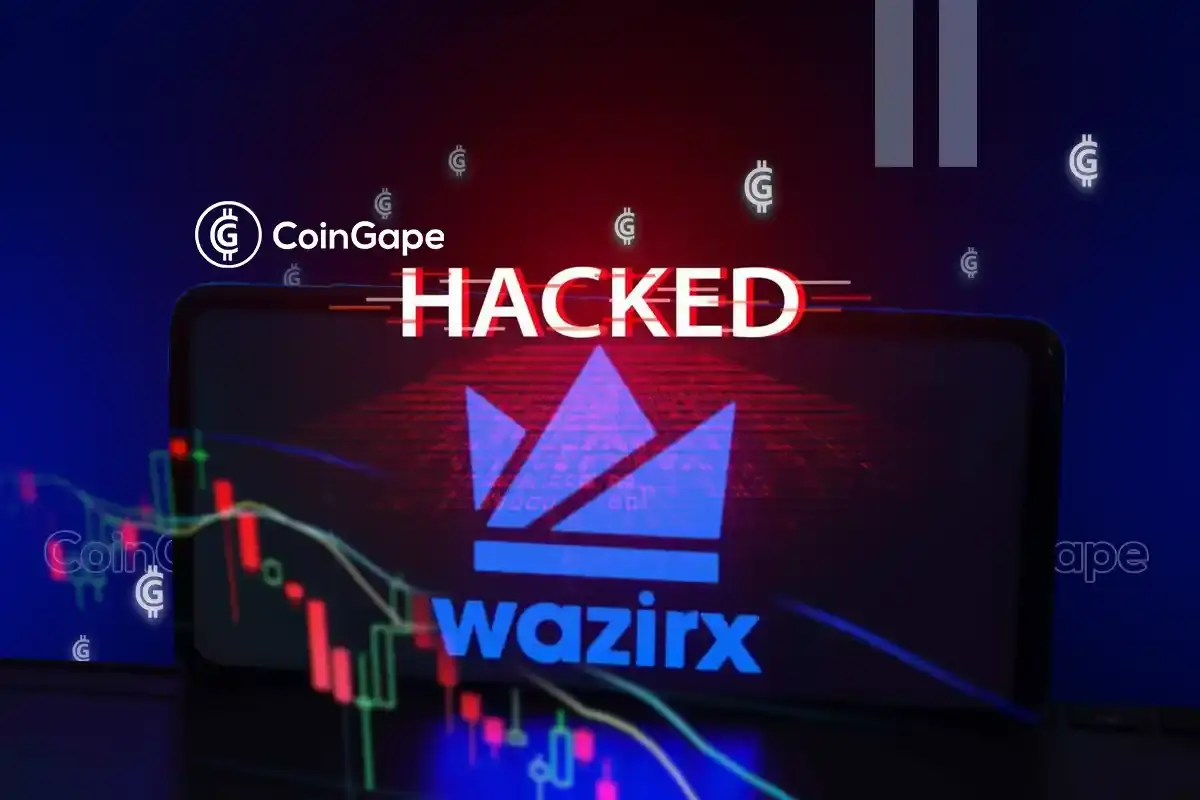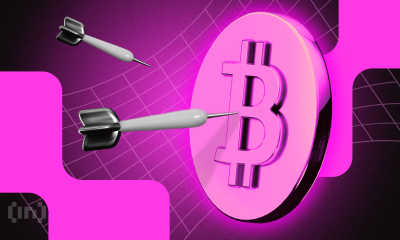Altcoin
Will Investors Get Their Money Back?

WazirX Hack Update: On Thursday, July 18, 2024, the Indian crypto exchange WazirX experienced a devastating security breach. The attack resulted in the loss of over $230 million worth of crypto assets. Hence, the users of the crypto exchange have been concerned about their holdings and whether CEX will be able to recover the stolen funds.
WazirX Hack: What Exactly Happened?
WazirX announced via their social media platform X that one of their multisig wallets had been compromised. This wallet was secured using Liminal’s digital asset custody and wallet infrastructure, and it had been in operation since February 2023. The wallet required multiple signatories for transaction approval—three from WazirX and one from Liminal.
However, despite these security measures, the attackers exploited a discrepancy between the data displayed on Liminal’s interface and the actual transaction contents. This allowed the attackers to replace the transaction payload, thereby gaining control over the wallet.
The breach specifically targeted WazirX’s Ethereum multisig wallet, affecting both Ethereum (ETH) and ERC-20 tokens. The attackers managed to steal 15,298 ETH directly. The exploiter subsequently swapped other assets such as Shiba Inu (SHIB), Polygon (MATIC), and Pepe Coin (PEPE) tokens, amassing a total of 59,097 ETH, valued at $218 million at press time.
WazirX Provides Update On Hack & Takes Immediate Action
In response to the breach, WazirX swiftly paused INR and crypto withdrawals to protect remaining assets. Furthermore, they filed a police complaint and reported the incident to the Financial Intelligence Unit (FIU) and CERT-In, India’s nodal agency for responding to cyber incidents. In addition, WazirX also reached out to over 500 exchanges to block the identified addresses involved in the theft.
Moreover, many exchanges reportedly are cooperating with the investigation. WazirX’s preliminary findings and ongoing investigations point to a sophisticated cyber attack that exploited the interface and transaction verification process managed by Liminal.
Both WazirX and Liminal have engaged in a blame game, each accusing the other of lapses in security. Liminal maintains that their infrastructure was not compromised. Additionally, they accused that the breach occurred due to vulnerabilities on the exchange’s side.
Also Read: Just In: Liminal Claims No Responsibility in $230M WazirX Wallet Hack
The Recovery Efforts By WazirX
The path to recovery for the stolen funds is fraught with challenges. On-chain analytics firm Spot on Chain reported that the hacker’s Ethereum holdings have significantly increased following the liquidation of stolen assets. Notably, the hacker has used Tornado Cash, a mixing service, to obscure the origin and destination of funds. This complicates efforts to trace and recover the assets.
In another update on the hack, WazirX has stated that they are working with forensic experts and law enforcement agencies. They aim to track the stolen funds and identify the perpetrators. They have also received support from the crypto community. Hence, multiple individuals and entities offering assistance in the fund recovery process.
Despite these efforts, the nature of the cyber attack and the use of mixing services like Tornado Cash make the recovery of stolen assets a daunting task. However, the majority of the stolen funds, converted to Ethereum, still reside in the hacker’s wallet.
The embargo on these wallets by different crypto exchanges could have led to the funds remaining stagnant. This rightly offers some hope of successful recovery of funds. Nevertheless, if the WazirX hacker manages to transfer the ETH funds to Tornado Cash, chances of a recovery may become slim.
Adding another layer of complexity to the situation, the notorious North Korean hacker group Lazarus is suspected of being behind the WazirX exploit. This group has been linked to numerous high-profile cyber attacks targeting crypto exchanges and financial institutions worldwide. If Lazarus is indeed involved, it underscores the sophisticated and international nature of the threat. This could further complicate the recovery efforts.
Here’s What WazirX Investors Need To Know
For WazirX investors, the immediate concern is whether they will get their money back. Here are the key factors that will influence the outcome:
1. Tracing & Recovery Efforts:
The success of forensic investigations and collaborations with law enforcement and other exchanges will be critical. Identifying the flow of funds and freezing or recovering assets requires advanced cyber forensic techniques and international cooperation. Since, WazirX’s update on hack indicates an active participation of the forensic team, there is a high chance investors might be able to get back their money.
2. Community Support:
The involvement of the entire crypto community, including exchanges and blockchain analytics firms, can significantly enhance the chances of tracing and recovering the stolen assets. Moreover, the Indian exchange has contacted over 500 CEXs for cooperation, which could expedite recovery.
3. Legal Actions:
The outcome of legal actions taken by WazirX, including their police complaint and reports to regulatory bodies, will also play a crucial role. These actions can help in apprehending the perpetrators and potentially recovering some of the stolen funds.
4. Compensation Plans:
In the event that the stolen funds cannot be fully recovered, WazirX may need to come up with compensation plans for affected investors. This could involve leveraging insurance policies, setting up a recovery fund, or other ways to mitigate the impact on investors.
5. Use of Tornado Cash:
The notorious crypto mixer has been used by WazirX exploiters. Hence, if they are successful in transferring the stolen crypto assets to Tornado Cash, a recovery might be next to impossible. Thus, the exchange needs to freeze the exploiter wallets and recover the funds before such a mishap occurs.
6. Not An Inside Job:
Nischal Shetty, founder of WazirX, refuted claims of an insider being involved in the hack. If it were an inside job, the recovery could have been way easier. However, the involvement of a sophisticated hacker group and platforms like Tornado Cash makes it complicated.
In a post on X, he clarified, “The cyber attack stemmed from a discrepancy between the data displayed on Liminal’s interface and the transaction’s actual contents. During the cyber attack, there was a mismatch between the information displayed on Liminal’s interface and what was actually signed. We suspect the payload was replaced to transfer wallet control to an attacker.”
Also Read: WazirX Hack Update: Firm Working With 500 Exchanges And FIU To Recover Funds
The presented content may include the personal opinion of the author and is subject to market condition. Do your market research before investing in cryptocurrencies. The author or the publication does not hold any responsibility for your personal financial loss.
Altcoin
Analyst Reveals How High XRP Price Can Go If This Happens

XRP price seems to be headed for a dramatic turning point, with various analysts citing bullish chart patterns that indicate a probable price spike over the next few months. The fourth-largest crypto is showing a strong technical setup on the 6-month candle chart, with formerly limiting resistance points now eliminated.
XRP Price Displays Eliminated Resistance And Bullish RSI
Technical analyst Dark Defender has posted a tweet that shows a 6-month candle chart indicating these “Eliminated Resistance” levels and a “Bullish RSI” (Relative Strength Index) indicator. The chart indicates that XRP has broken above significant historical resistance levels that previously capped price action.
Several price targets have emerged from analysts tracking the cryptocurrency. The analysts’ projections range from approximately $3.75 to over $18 in the coming months. Despite these bullish technical signals, sentiment indicators remain cautious, and the Fear & Greed Index shows a reading of 39. This places it in the “Fear” category.
6-Monthly time frame update on #XRP
Be honest: Is it Bullish or Bearish in the next 6 months?
The last candle will be closed by the end of June.
Short-Mid Term Targets: $3.75, $5.85, $18.22 (NFA)
I wish you an excellent weekend and a Happy Easter 🐣with your loved ones!… pic.twitter.com/pmuBkrn8Pe
— Dark Defender (@DefendDark) April 19, 2025
The 6-month candle chart for XRP/USD shared by analyst Dark Defender highlights two key technical factors that could support a potential price surge. First, the chart identifies multiple “Eliminated Resistance” levels that XRP has now cleared. This removes previous price ceilings that constrained upward movement in past cycles.
These eliminated resistance zones appear at different points on the historical chart, with the most recent breakthrough occurring in the latest completed candle. According to Dark Defender, this technical development raises an important question for traders: “Is it Bullish or Bearish in the next 6 months?” The analyst indicates that the present candle will close at the end of June 2025, giving the traders a time frame for possible price action.
The second important technical signal highlighted is a “Bullish RSI” reading. The Relative Strength Index, at the lower part of the chart, is shown to be on the rise, moving into bullish levels above the 70 level. This momentum indicator shows increasing buying pressure behind XRP’s recent price action.
XRP Could Soon Hit $5
CryptoBull analyst provides additional technical analysis, labeling the pattern as a massive bullish falling wedge with an even larger bullish triangle encompassing the wicks. The analyst predicts a breakout from the patterns and a target price that could see XRP go as high as $5 before finally landing at a base of $3.85.
#XRP Update: huge bullish falling wedge with an even bigger bullish triangle covering the wicks. We will break out soon and price will wick up to $5 and close around $3.85. pic.twitter.com/rqbIASYRpl
— CryptoBull (@CryptoBull2020) April 21, 2025
There have been suggestions by analysts about specific price targets for XRP in their outlook. Dark Defender shared short-term to medium-term target prices of $3.75, $5.85, and a wildly high target at $18.22.
CryptoBull offered a more detailed price action prediction and indicated that XRP is going to breakout in the near future with price action that can include a wick up to $5 and close around $3.85.
Amidst these modest predictions, certain analysts even predicted the XRP price to reach $280. Another analyst, Captain Faibik, instructed followers to continue purchasing XRP. He further added that the next increase will be “explosive” to the $5 level in the mid-term. Multiple analysts in agreement at the $5 level indicate it might be a key target for traders and investors.
Keep accumulating $XRP, Next Bullish leg will be explosive..📈
Midterm Target : 5$ 🎯
#XRP #XRPArmy #XRPUSDT pic.twitter.com/95TKndWlws
— Captain Faibik 🐺 (@CryptoFaibik) April 21, 2025
Though analysts are optimistic, the prevailing mood in the market is cautious. CoinCodex indicates their latest forecast predicts that XRP could drop by 8.35% to $1.95 on May 21, 2025. CoinCodex also predicts that XRP had 13 days of gain in the previous 30 days (43%), and price activity has averaged 7.48% in the last 30 days.
Disclaimer: The presented content may include the personal opinion of the author and is subject to market condition. Do your market research before investing in cryptocurrencies. The author or the publication does not hold any responsibility for your personal financial loss.
Altcoin
OM Price Reacts as MANTRA Announces Major 300M Token Burn Update

OM price has reacted negatively to MANTRA’s new token burn announcement. The team announced a token burn plan that will remove 150 million OM tokens from circulation forever. As per the details, they will plan an additional 150 million token burn which can bring the burn amount to 300 million tokens.
OM Price Slumps After Token Burn Announcement
According to the company’s announcement, CEO and Founder John Patrick Mullin will burn his entire 150 million allocation of team tokens. This was a promise he made to the community last week.
Despite the substantial supply reduction plan, the OM token price has reacted negatively to the news. Data shows that the OM price is down approximately 5% in the last 24 hours and trades at $0.5437. This decline adds to a much steeper drop of 91% over the past 30 days. Amidst this drop, CoinGape analysis talks about the possibility of OM rebounding 50% from its lows.
The token burn process has already started with the unstaking of 150 million OM from the Team and Core Contributor allocation. This was initially staked at mainnet genesis in October 2024 to support network security. The company has provided transaction hashes for verification, and the unstaking period will complete on April 29, 2025. Following this, the OM will be sent to a burn address and permanently removed.
MANTRA has started a transparent process for the token burn and has provided specific technical details to allow community verification of each step. The unstaking of 150 million tokens from the Team and Core Contributor allocation has begun and can be tracked through three transaction hashes provided in the announcement.
The tokens were originally staked at mainnet genesis in October 2024 to bootstrap network security. According to the announced timeline, the unstaking period will conclude on April 29, 2025, after which all 150 million tokens will be sent directly to the designated burn address.
MANTRA Plans An Additional 150 Million Token Burn
MANTRA has also mentioned that once the burn transaction is executed, they will give complete verification to the users. The company is also in discussions with key ecosystem partners to implement an additional 150 million OM token burn. This would double the impact of the initial burn to a total of 300 million OM removed from circulation.
The token burn will have major effects on MANTRA’s tokenomics and staking economics. According to the blog details, the 150 million OM burn will reduce the total supply from 1.82 billion OM to 1.67 billion OM. This is regarding an 8.2% reduction in the overall number of tokens present.
The burn will also impact the staking configuration within the network in a particular manner. Removing these tokens from staked supply will reduce the staked tokens to 421.8 million OM.
This adjustment will decrease the bonded ratio of the network from 31.47% to 25.30%. This decrease in the bonded ratio is especially important to stakers who bond their OM. This is because it will lead to a greater staking APR (Annual Percentage Rate).
Mantra’s crash was one of the most notable ones recently. Crypto exchange Binance also broke silence amid the token’s crash.
Disclaimer: The presented content may include the personal opinion of the author and is subject to market condition. Do your market research before investing in cryptocurrencies. The author or the publication does not hold any responsibility for your personal financial loss.
Altcoin
Expert Reveals Pi Network’s Team Efforts To Stabilize Price Amid Token Unlocks

Crypto expert Dr. Altcoin has revealed the efforts that the Pi network team has made so far to help stabilize the Pi coin price. The expert explained that this is the reason why the altcoin has been able to stay above the $0.63 support level, rather than dropping to new lows following the recent token unlocks.
Expert Reveals How Pi Network Team Has Helped Stabilize Pi Coin Price
In an X post, Dr. Altcoin revealed that the Pi Network team has already implemented a strategy to absorb the extra Pi supply entering Centralized Exchanges (CEXs) to help stabilize the Pi coin price. He remarked that it has worked so far, seeing as the price has stabilized.
The expert made this revelation while explaining why the Pi coin hasn’t dropped to $0.30 or even lower amid the large volume of unlocked Pi. Instead, the coin has held above the $0.60 support.
Dr. Altcoin asserted that this move from the Pi Core Team proves that the project is not just another pump-and-dump project and that the coin is here to stay and lead. The expert admitted that he and the entire Pi community remain disappointed with the current price and the team’s ongoing lack of communication.
However, he hopes that the team resolves this soon. The expert also affirmed that the Pi Network has remained successful, consistently ranking in the top 30 crypto by market cap. He also stated that the recent strategy by the Pi Core Team to manage the influx of Pi is a clear sign of their long-term vision for the project.
It is worth mentioning that the expert also recently mentioned that the Consensus 2025 conference is pivotal for Pi’s ecosystem. He believes this is an avenue for the team to promote the project.
Pi Coin Price To Still Reach $314
In his post, Dr. Altcoin also stated that he believes that the Pi Network’s price can still reach $314 within the next five years. He added that he has never been more confident in the project’s future than he is today.
In line with this, he urged all Pi community members to continue supporting the project and keep buying the altcoin while it is still cheap. Community members look to be actively accumulating at the moment. As CoinGape reported, whales recently moved over 41 million Pi coins off exchanges, providing a bullish outlook for Pi Network’s price.
In the short term, crypto analysts like Moon Jeff predicted that the Pi coin price could reclaim the $1 level and rally to as high as $5 soon. A listing by a top crypto exchange could undoubtedly send the altcoin to new highs. CoinGape recently reported that the HTX exchange has hinted at a potential listing of the altcoin.
Disclaimer: The presented content may include the personal opinion of the author and is subject to market condition. Do your market research before investing in cryptocurrencies. The author or the publication does not hold any responsibility for your personal financial loss.
-

 Bitcoin15 hours ago
Bitcoin15 hours agoUS Economic Indicators to Watch & Potential Impact on Bitcoin
-

 Bitcoin21 hours ago
Bitcoin21 hours agoHere Are The Bitcoin Levels To Watch For The Short Term
-

 Market17 hours ago
Market17 hours agoBitcoin Price Breakout In Progress—Momentum Builds Above Resistance
-

 Bitcoin24 hours ago
Bitcoin24 hours agoBitcoin LTH Selling Pressure Hits Yearly Low — Bull Market Ready For Take Off?
-

 Altcoin12 hours ago
Altcoin12 hours agoExpert Reveals Why BlackRock Hasn’t Pushed for an XRP ETF
-

 Altcoin17 hours ago
Altcoin17 hours agoExpert Says Solana Price To $2,000 Is Within Reach, Here’s How
-

 Market15 hours ago
Market15 hours agoSolana Rallies Past Bitcoin—Momentum Tilts In Favor of SOL
-

 Market14 hours ago
Market14 hours agoVitalik Buterin Proposes to Replace EVM with RISC-V




















✓ Share: